The high return on resources provided by a cooling tower’s efficient water filtration system reduces operation and maintenance costs, while meeting Green Building Initiative requirements, argue Glenn Dobbs and Roy McDougall
The high return on resources provided by a cooling tower’s efficient water filtration system reduces operation and maintenance costs, while meeting Green Building Initiative requirements, argue Glenn Dobbs and Roy McDougall
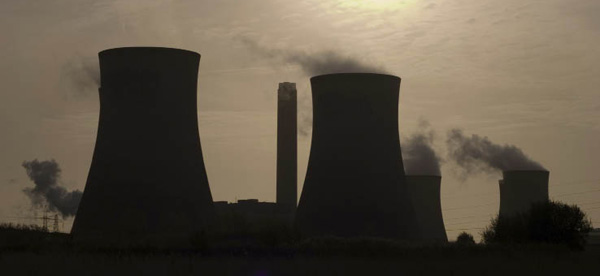
THE BACKGROUND
Keeping an open recirculation cooling water system clean assists in maintaining heat transfer efficiency, reduces maintenance costs and enhances the effectiveness of the water treatment programme, which contributes to increased cooling tower system life. Open systems are prone to fouling from airborne contaminants, waterborne contaminants and contaminants associated with a process. Air contains dust, dirt, organic matter, insects, microbiological organisms and gasses. Make-up water can contain a variety of dissolved salts, suspended solids and microbiological organisms. Systems can also produce suspended solids from within, due to corrosion, scale and microbiological growth.
Selection of filtrations:
In this context, filtration can be employed to remove contamination from the water and improve the circulating water quality. Separators, media filters, automatic screen filters and cartridge/membrane systems offer effective ways of removing material from the circulating water. However, each of these filtration technologies offer differing benefits and associated costs. Understanding the differences in these technologies is necessary for a proper selection of the method and device. Filtration and other water cleaning systems can be either in line or side-stream, and basin cleaning systems can enhance contaminant removal.
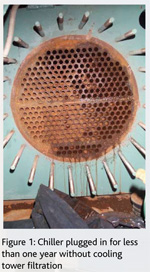 The selection of filtration system technology will depend upon:
The selection of filtration system technology will depend upon:
It needs to be remembered that the selection of appropriate filtration systems should be made with a specialist and a filtration system supplier.
BENEFITS OF COOLING TOWER FILTRATION
Incorporating efficient filtration into a cooling tower can extend the life of the system, including associated pipe work, chillers and plate heat exchangers, and will lower maintenance costs while improving cooling efficiencies, thereby providing a significant return on resources (ROR).
It also comes with other collateral benefits. They are as follows:
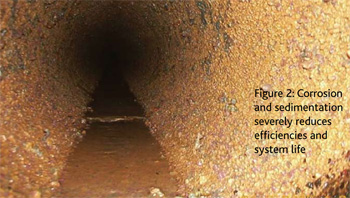 Filtration improves efficiencies by minimising deposits on heat transfer surfaces, preventing heat exchanger clogging and maintaining efficient cooling water distribution. It is shown that 0.025 mm of fouling equates to 10% reduction in cooling efficiencies1. Solid contaminants clog small spray nozzle orifices, causing poor cooling system water distribution.
Filtration improves efficiencies by minimising deposits on heat transfer surfaces, preventing heat exchanger clogging and maintaining efficient cooling water distribution. It is shown that 0.025 mm of fouling equates to 10% reduction in cooling efficiencies1. Solid contaminants clog small spray nozzle orifices, causing poor cooling system water distribution.SOURCES OF CONTAMINATION
Four primary sources are responsible for most common cooling tower contaminants. They are:
In open-loop water circulation systems, such as those used in cooling towers, filtration systems can be sized to filter around five to 10% of the full stream, which is known as side-stream filtration. With the amount of the full stream filtered, the water gets cleaned and its particle load condition stabilised in a short period of time – typically less than two to three days. In areas where debris is more prevalent, the amount of side-stream can be increased to handle the higher particulate load.
TYPES OF FILTRATION
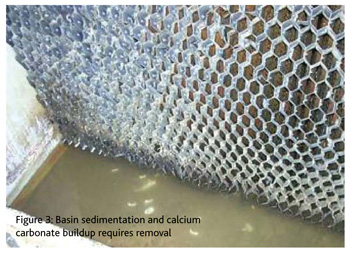 Filtration technologies used to filter cooling tower water include:
Filtration technologies used to filter cooling tower water include:
Centrifugal separators:
Centrifugal separators remove up to 90% of the particles that have a specific gravity greater than water and are larger than 70 microns2. Particles that are organic or lighter than water or particles smaller than 70 microns, most likely will not be removed in a single pass.
Centrifugal separators are cleaned either by purging the particle collection chamber or by allowing a continuous small flow from the collection chamber to a drain. Centrifugal separators are often an integral part of other filtration systems that use other technologies to more reliably remove smaller particles. In such cases, the separator removes the larger and heavier particles, while the other technologies remove the remaining finer and lighter particles that pass through the separator.
Sand media filters:
Sand media filters require a relatively large footprint, and their flush waste is very high compared to other filtration technologies. In a sand media system that requires 1,200 litres of waste to back-flush, the equivalent size of some self-cleaning screen filter technologies use only 30 litres to back-flush. Back-flushing sand media takes full flow for at least three to five minutes, and the tank being flushed must be completely off-line during the back-flush process.
Sand media can remove particles that are 10 microns or smaller, and is excellent for removing organic particles. However, it is difficult to back-flush heavy particles, such as dirt, sand or calcium carbonate collected from the tower without losing some of the media. The media needs to be periodically replaced, as it is an excellent breeding ground for bacteria and algae growth.
Micro-filtration systems:
Micro-filtration systems may be required for specialised cooling systems. Cartridge, bag or membrane systems are available that can remove both organic and inorganic particles down to 0.5 micron without requiring back-flushing. These technologies can be expensive because the cartridges, bags and membrane might foul frequently and require manual replacement.
Automatic self-cleaning screen filters:
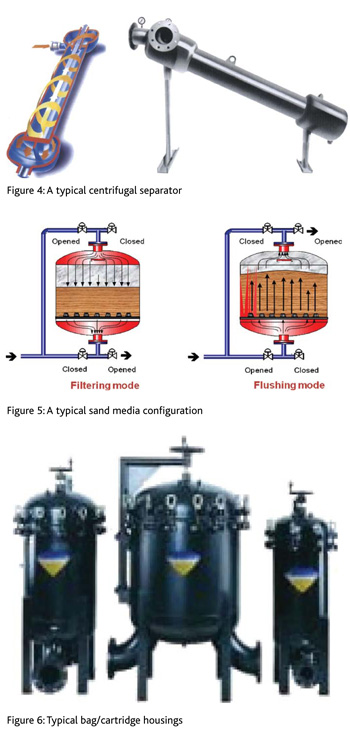 Automatic self-cleaning screen filters are becoming the filter technology of choice for cooling tower filtration applications. The primary reason is that the screen filtering element acts as a barrier removing all particulate – both organic and inorganic – down to the micron rating of the filter. Self-cleaning screen filters can remove particulate down to 10 micron in size and they provide the least flushing discharge or wastewater during the self-cleaning process. Some automatic self-cleaning screen filter technologies use only a few litres of water during each flushing cycle. With the lower flush volume required to clean the screen, it is much easier to show that none of the flush water is wasted, since it is a small portion of the blowdown requirements3.
Automatic self-cleaning screen filters are becoming the filter technology of choice for cooling tower filtration applications. The primary reason is that the screen filtering element acts as a barrier removing all particulate – both organic and inorganic – down to the micron rating of the filter. Self-cleaning screen filters can remove particulate down to 10 micron in size and they provide the least flushing discharge or wastewater during the self-cleaning process. Some automatic self-cleaning screen filter technologies use only a few litres of water during each flushing cycle. With the lower flush volume required to clean the screen, it is much easier to show that none of the flush water is wasted, since it is a small portion of the blowdown requirements3.
Unlike media filtration, some automatic self-cleaning screen technologies provide uninterrupted screen filtration during the screen cleaning process, thereby requiring only a single filter for continuous filtration. Automatic self-cleaning screen filters are also the filter of choice for pre-filtering micro-filters, such as cartridges, bags or membrane to extend the life of the media.
It is important to note that self-cleaning screen filtration provides zero water waste. Cooling tower system bleed rate for blowdown is a requirement for scale control. It is proven that using a filtration technology that has minimal flush water requirement actually wastes no additional water than is required for blowdown. The graph below (Figure 8) shows that there is very little change in cooling tower water conductivity resulting from filtration flush water usage. This means that the filter’s flush water is not wasted, but may only extend periods between each blowdown event. Hence, no water is wasted when using self-cleaning screen filtration.
The graph below (Figure 8) shows a relatively constant conductivity (red line) over a period of two months on a cooling tower with a side-stream, self-cleaning screen filtration system. The conductivity is set to remain at 1.5 mS/cm. The blue lines represent bleed valve opening and closing, which regulates the conductivity setting. The self-cleaning screen filtration system self-cleans multiple times in one day using 30 litres per self-cleaning event to manage the cooling tower water cleanliness. It is shown that the self-cleaning screen filtration system with this low self-cleaning water usage has no effect on conductivity.
Another filtration technology with a much higher water use for self-cleaning, such as an equivalent sand media filtration system using 1,200 liters per cleaning cycle, would result in the conductivity significantly dropping outside the allowed range. Hence, using more water than is required for blowdown requirement, results in a significant amount of water waste.
Basin cleaning and agitation nozzles:
Basin cleaning and agitation nozzles prevent contaminants from the air and suspended solids in the circulating water from settling out in the cold water basin, which is the most effective location to install a filtration system.
Similar to a side-stream arrangement, water is removed from and returned to the cold water basin via the filter. Some cooling tower basins can incorporate sump agitation to remove settled solid water jets, or alternatively, agitation nozzles can be employed to create underwater currents to direct solids towards the drain or filter suction points.
The agitation nozzles are normally placed minimum 50 mm below the water surface, and are spaced for even distribution of turbulence. The nozzles are placed on a manifold pipe that is connected to the filter outlet and the suction side of the pump pulls the basin water to be filtered from the basin drain.
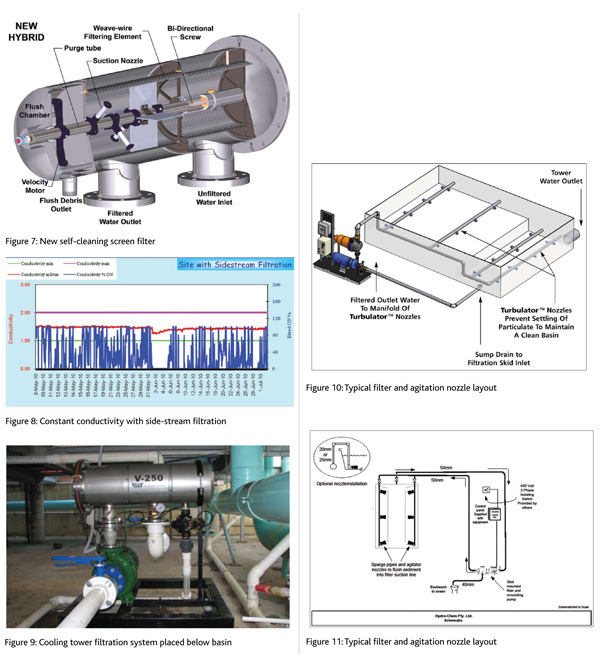
SYSTEM SELECTION
A filtration system can be designed to meet any level of filtration quality desired. The most important prerequisite in specifying the filtration system is to define the requirements of the cooling tower, as well as the quality of water to be filtered. Other design features that can be incorporated include:
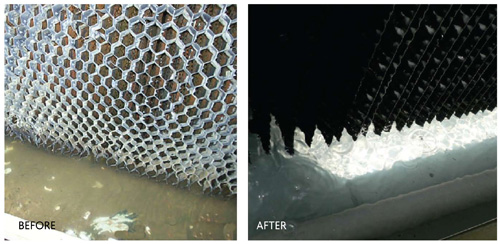
What to look for:
To sum up, it needs to be remembered that the required filtration might vary depending on the tower location, local conditions and filtration objective. You need to reduce the TSS only to the desired cost-effective level – don’t over-filter. The point to be noted is that the water does not have to be of potable grade. You’re not going to drink it! Most importantly, purchase the level of filtration that will achieve the highest ROR, and thus will give you the greatest return on your investment.
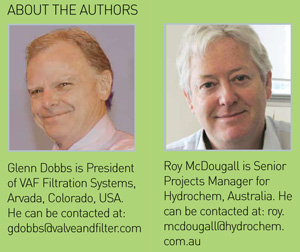
Copyright © 2006-2025 - CPI Industry. All rights reserved.